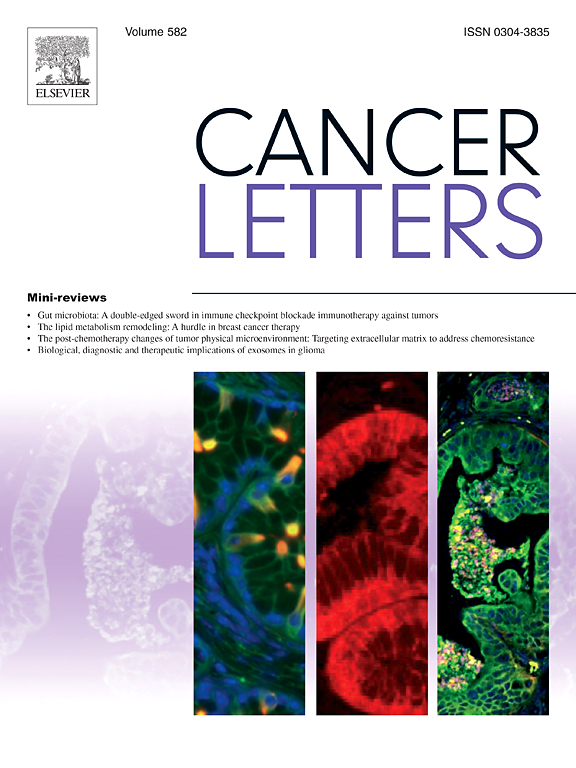绘制肿瘤免疫景观:癌症免疫治疗中的单细胞RNA测序
IF 10.1
1区 医学
Q1 ONCOLOGY
引用次数: 0
摘要
单细胞RNA测序(scRNA-seq)已经成为揭示病变组织的细胞复杂性和结构的变革性技术。通过捕获单个细胞的转录组谱,scRNA-seq揭示了肿瘤内的异质性、不同的免疫细胞状态和动态的细胞间相互作用,使其在肿瘤免疫微环境的研究中特别有价值(TIME)。近年来,scRNA-seq在癌症基础研究和临床应用中得到广泛应用,促进了我们对肿瘤发展、免疫调节和治疗耐药的认识。这些进步也推动了解释复杂scRNA-seq数据集所需的计算工具和分析方法的发展,以支持精确诊断的发展。本综述系统总结了scRNA-seq数据的核心分析工作流程,概述了数据处理的最佳实践,并探讨了该技术在TIME研究和转化肿瘤学中的新兴应用和挑战。本文章由计算机程序翻译,如有差异,请以英文原文为准。
Mapping the tumor immune landscape: single-cell RNA sequencing in cancer immunotherapy
Single-cell RNA sequencing (scRNA-seq) has emerged as a transformative technology for unraveling the cellular complexity and architecture of diseased tissues. By capturing the transcriptomic profiles of individual cells, scRNA-seq reveals intra-tumoral heterogeneity, distinct immune cell states, and dynamic intercellular interactions, making it particularly valuable in the study of the tumor immune microenvironment (TIME). In recent years, scRNA-seq has been widely adopted in both basic cancer research and clinical applications, advancing our understanding of tumor development, immune regulation, and therapy resistance. These advances have also driven the evolution of computational tools and analytical methods needed to interpret complex scRNA-seq datasets to support the development of precision diagnostics. This review systematically summarizes the core analytical workflows for scRNA-seq data, outlines best practices in data processing, and explores the emerging applications and challenges of this technology in TIME research and translational oncology.
求助全文
通过发布文献求助,成功后即可免费获取论文全文。
去求助
来源期刊

Cancer letters
医学-肿瘤学
CiteScore
17.70
自引率
2.10%
发文量
427
审稿时长
15 days
期刊介绍:
Cancer Letters is a reputable international journal that serves as a platform for significant and original contributions in cancer research. The journal welcomes both full-length articles and Mini Reviews in the wide-ranging field of basic and translational oncology. Furthermore, it frequently presents Special Issues that shed light on current and topical areas in cancer research.
Cancer Letters is highly interested in various fundamental aspects that can cater to a diverse readership. These areas include the molecular genetics and cell biology of cancer, radiation biology, molecular pathology, hormones and cancer, viral oncology, metastasis, and chemoprevention. The journal actively focuses on experimental therapeutics, particularly the advancement of targeted therapies for personalized cancer medicine, such as metronomic chemotherapy.
By publishing groundbreaking research and promoting advancements in cancer treatments, Cancer Letters aims to actively contribute to the fight against cancer and the improvement of patient outcomes.
 求助内容:
求助内容: 应助结果提醒方式:
应助结果提醒方式:


